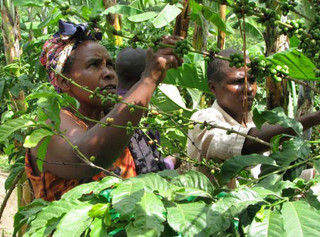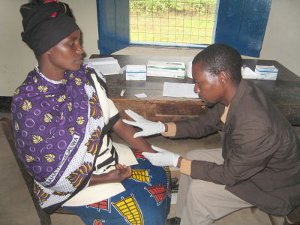Microinsurance: principles, products and covered risks
 Initially invested by Micro Finance Institutions (MFI) and informal organisations, this new “niche” is drawing growing interest among institutional players such as donors, governments and insurance companies. According to an ever widespread opinion, microinsurance may stand as a potentially efficient tool to combat poverty in the regions where 80% of the world population is concentrated.
Initially invested by Micro Finance Institutions (MFI) and informal organisations, this new “niche” is drawing growing interest among institutional players such as donors, governments and insurance companies. According to an ever widespread opinion, microinsurance may stand as a potentially efficient tool to combat poverty in the regions where 80% of the world population is concentrated.
Microinsurance: Context of the emergence
Microinsurance has emerged within an economic and social framework that is marked by the disengagement of states from public health services and welfare plans and by the rise of civil society through community movements and the NGOs involved in sustainable development actions.
In most countries, microinsurance systems have been developed by informal organizations or MFIs in the fashion of Grameen Bank, the pioneer of micro credit in Bangladesh.
Having both a social and economic scope, the objective of such a device is to reduce risk exposure for the most vulnerable households by providing them with a cover which suits their budget.
The Grameen Bank
Set up officially in 1983 by Muhammad Yunus in Bangladesh, the Grameen Bank, ("Grameen" standing for village), is a bank specializing in micro credit. It has about 1 400 branches and operates in more than 50 000 villages. Since its establishment, it has disbursed 4.69 billion USD in loans and posted refund rates of about 99%.
The organization along with its founder have been awarded the 2006 Nobel Prize for peace.
Microinsurance: Basic principle
Just like all classical insurance systems, microinsurance works with the principle of risk mutualization among a great number of individuals. This mutualization allows a protection against any low-frequency or high-intensity claim. The service is provided in return of a regular premium payment that is proportionate to the probability of the concerned risks.
Target population
 Microinsurance may benefit a wide spectrum of the population from those under poverty line to lower middle class people who remain quite vulnerable in the absence of an insurance scheme or a welfare plan.
Microinsurance may benefit a wide spectrum of the population from those under poverty line to lower middle class people who remain quite vulnerable in the absence of an insurance scheme or a welfare plan.
Clients may be individuals, households, rural, urban or suburban communities often working in the informal sector or in micro enterprises.
According to regions, social organizational patterns and cultures, the typical microinsurance targets are:
- MFI clients having already a loan or a saving account
- Members of health mutuals
- Women's associations
- Farming cooperatives
- Trade unions and social and professional organizations
- Informal funeral funds
- Retail sale clients
- Social solidarity groups
Microinsurance players
Players may be of various status: conventional insurers, mutuals, MFI, governments, community or professional bodies, health service providers.
According to the different patterns, players may operate:
As a direct insurer providing a comprehensive service. In this case, the service provider has full command over the whole production chain, from the stage of design of the scheme until its distribution. Only powerful MFIs, come to full maturity, managed to develop a technical expertise enabling them to fulfill this role. For example: SEWA, Tata in India, Delta Life in Bangladesh, Sky in Cambodge.
As an agent-partner. The service provider intervenes as the intermediate distributing agent of the insurance company. The design and the management of the product are carried out by the insurer while the marketing and the distribution are entrusted to the agent. The scheme involves task spreading. The insurance company feeds its financial reserves, sets the premiums, supervises applications for cover and ensures compliance with legal obligations. The agent, on the other hand, is entrusted with the rational transfer of the risk, the resources and knowledge sharing between formal and informal sectors. Examples of partnerships:
- AIG: Uganda, Malawi, Tanzania
- Madison Insurance: Zambia
- Allianz: Indonesia, India
- Banamex and Seguros Azteca: Mexico
- Aviva: India
As a mutual or a community: the insurers themselves are both service providers and managers of the system. The plan generally pertains to credit, life, saving and health insurance. In the specific case of health insurance, the supplier also offers partial or full care service and guarantees service quality as well as customer loyalty.
Microinsurance: terms for implementation
 The key prerequisites are identical to those governing classical insurance, that is: enabling regulation, technical and institutional competency.
The key prerequisites are identical to those governing classical insurance, that is: enabling regulation, technical and institutional competency.
The main challenge of microinsurance being the weakness and irregularity of population income, the implementation of viable and efficient microinsurance schemes presupposes that a certain number of specific conditions should be gathered:
- a subtle knowledge of the field and real proximity to the population
- an accurate definition of the product according to demand
- the design of simple, understandable and attractive products
- rating and premiums collection conditions adapted to the payment capacity of the insured
- local, accessible and flexible distribution channels in line with the social fabric
- aids to and method of communication adapted to the local reality and to the population's level of literacy
- the establishment of assistance procedures for claim reports and speeding up claim settlement periods
- monitoring procedures and systems to avoid anti-selection, moral and fraud risks
Types of risks
In light of its sphere of intervention, microinsurance is rather convenient for the cover of microeconomic shocks, that is, events leading to unexpected and urgent need of money additional to the amount available to the household or to the individual. It may be personal unexpected events such as the death of a family head, accidents, injuries or diseases causing partial or total disability.
Other risks are related to personal or real estate property: dwellings, production tools.
Microinsurance products
The most common products turn around health and life insurance while supply is getting more and more diversified.
- Life insurance: Standing as a key product in the system, life insurance is often underwritten within the framework of loans granted by MFI. It combines a life insurance cover (in the event of death) and a saving product (in case of life) with the possibility of joining several additional guarantees (loan, funeral expenses).
Funeral insurance
In Sub-Saharan Africa, burial fees endured by individuals incur expenses well above the household's income. Funeral cover stands as a major market in South Africa where ten million adults are estimated to benefit from such a cover.
- Health insurance:
 Health problems have are deemed to be key factors contributing to poverty, therefore, health insurance is the most solicited guarantee by the population. It provides a cover against illness and accidents as well as prevention services (vaccination, contraception).
Health problems have are deemed to be key factors contributing to poverty, therefore, health insurance is the most solicited guarantee by the population. It provides a cover against illness and accidents as well as prevention services (vaccination, contraception). - Property insurance: It provides fire and miscellaneous accidents cover for various individual, professional and agricultural risks in the event of loss or damage.
- Agricultural insurance: Given the crucial role of the agricultural activity for rural populations, the plan is poised to undergo a big boost in the future. Several international institutions including the World Bank and the United Nations FAO are developing, in association with insurance companies, climate-related insurance projects in Africa, South America, Europe and Asia. For this sector of the activities, other products are available such as crop insurance and livestock insurance.
Microinsurance: problematics and challenges
Its gradual expansion throughout the planet and its adoption as an alternative response to the need of protecting the most vulnerable populations have, henceforth, made the microinsurance sector a full-fledged on the financial landscape.
The sector which is restructuring and undergoing innovations enjoys a high-potential growth, attracting new players among the classical insurance companies. Some of them intervene in partnership with local MFIs in the developing countries while others are inaugurating similar programs designed for micro entrepreneurs even in Europe.
Nonetheless, and despite the success stories reported, there's still room for improvement for the microinsurance system as regards the absence of an assessment and exhaustive data to allow the accurate measurement of the efficiency and profitability of the enterprises operating in the sector.
It is noted that most of the southern countries indeed have copied the insurance code of the industrialized countries while the situation there is radically different in terms of standard of living and insurance penetration rates.
The provisions for the creation of insurance companies are financially binding and hindering the advancement of microinsurance. The regulations governing distribution are faltering or inappropriate. For example, the CIMA Code in French-speaking Africa which fails to grant official license to informal sector institutions wishing to establish microinsurance systems.
The restrictive legislative framework, the absence of state oversight and support, the small size of the institutions and the lack of access to reinsurance protection nets have created a situation that weakens micro- insurance programs and viability.
According to active donors in the sector (German cooperation agency GTZ) or professional entities (the international association of insurance inspectors), the promotion and the sustainability of microinsurance depend, in the first place ,on the governments' decision, through the adoption of a legislative and regulatory framework specifically tailored to the sector and monitoring measures as tax incentives.
